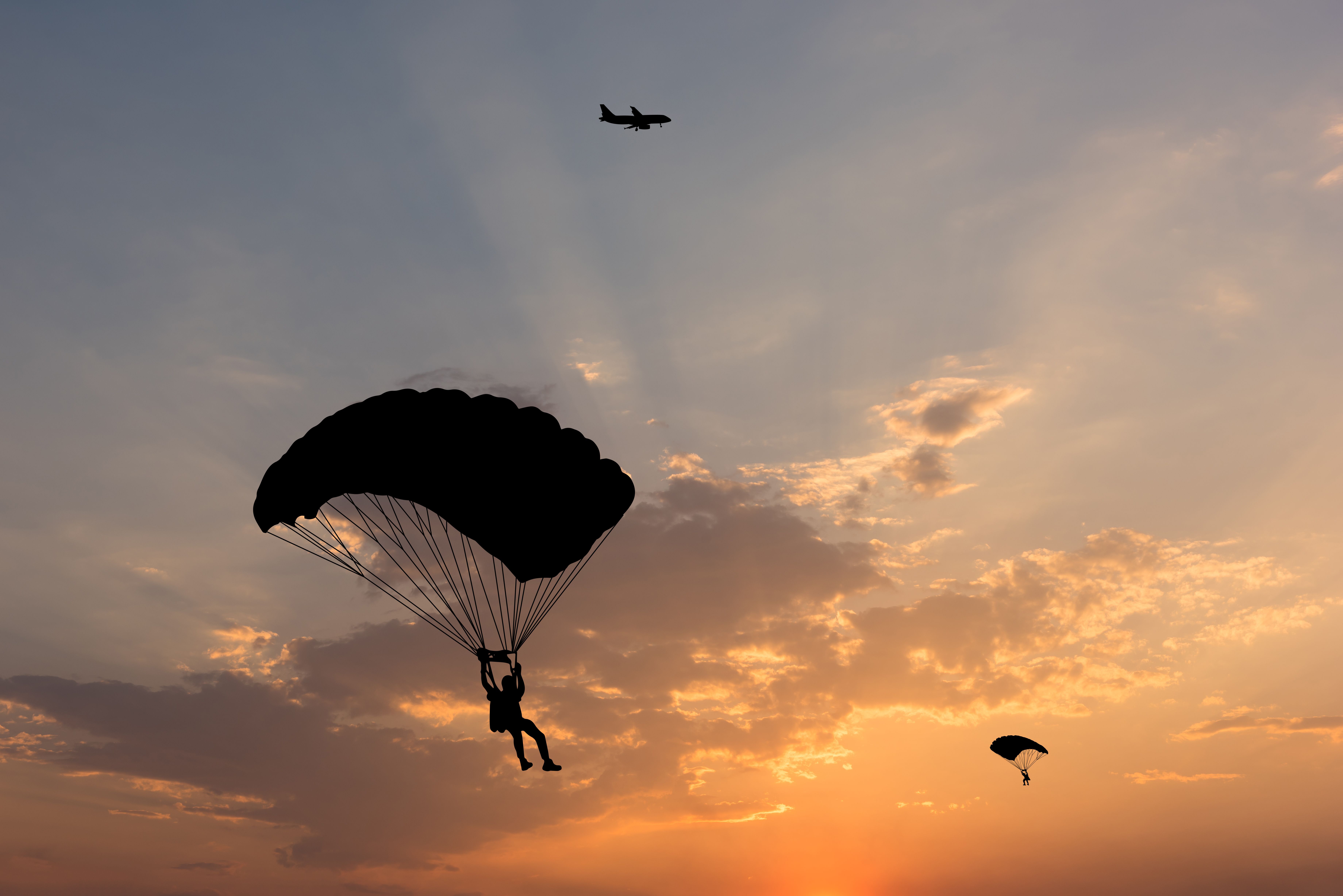Regardless of how safe commercial air travel has become, nervous fliers likely still find themselves wondering why planes don't have parachutes. After all, cars have airbags and seatbelts to keep us safe, so why don't commercial airlines provide these life-saving devices for passengers?
Do you know how to skydive?
Most regular airline passengers won't have previously jumped from an aircraft. Those who have will be aware of the amount of training and instruction required to use a parachute safely. Even first-time skydivers embarking on a tandem jump, where essentially the instructor does everything for them, need at least 30 minutes of basic instruction before the dive.
Static line jumps, where the parachutist has his canopy deployed as soon as he leaves the plane, still require four or more hours of training before the jump. Those who want to jump completely independently will require a good day's worth of ground training, including how to move their body in flight and all the hand signals needed to maintain communication between the jumper and instructor.
Even if you were the world's most experienced skydiver already, which most of us aren't, there are some other inherent problems with jumping from a commercial plane.
Get the latest aviation news straight to your inbox: Sign up for our newsletters today.
You couldn't get out fast enough
The first and most obvious problem is the sheer number of people on a commercial plane. To have all 200+ passengers strapping into parachutes and proceeding to the few exit doors to make a jump would likely see the majority run out of time before the plane hits the ground.
When groups of people skydive for leisure, successive groups must leave a reasonable distance between themselves and the previous group of jumpers. This is usually targeted at a minimum of 500 feet, meaning several seconds are required between groups making the jump. As such, even if everyone were kitted up when they boarded the plane, there just wouldn't be enough time for everyone to get out of the door.
Factor in the likely panic that would ensue when an emergency situation is encountered, and you can see that this is not a feasible solution.
According to the BBC, Airbus stated the following about the prospects of a parachute on one of its commercial models:
“Any parachute system [on an Airbus] would have to be very large indeed and comprise multiple canopies. The system would be complex, bulky and heavy and require multiple safety devices to make unintentional deployment impossible.”
Get all the latest aviation news right here on Simple Flying.
Survival unlikely
Commercial aircraft cruise at around 35,000 feet. Skydivers jump at no higher than 15,000 feet, more typically at between 10,000 and 13,000 feet. This is because the air is so low on oxygen, at any higher altitude, the skydivers would need supplemental oxygen strapped on in tanks to avoid passing out from hypoxia.
Given the cruising altitude of a commercial plane, passengers would require an oxygen tank, mask, and regulator. They would need a flight suit, ballistic helmet, and altimeter, too, just to survive. The alternative is that they would pass out from hypoxia and hope they wake up in time to deploy the parachute.
Even if everyone was suitably kitted up to survive the thin air, the speed at which a commercial jet cruises would almost certainly assure their fate. Skydiving planes are small and travel at just 80-110 mph at the point of the jump. Commercial planes are huge and cruise at around 450-600 mph - some even faster. Jumping passengers would be very likely to smash into the side of the aircraft, causing injury and potentially death.
All this is reliant on the incident occurring when the plane is at cruising height. The vast majority of fatal aircraft accidents happen during take-off and landing, and only approximately 9% of fatal accidents in the last two decades have occurred when the plane was cruising. These accidents were usually a result of wind shear or lightning, neither of which are conditions even the most experienced parachutist would want to jump into.
All in all, the safety features on a commercial plane have been implemented based on the most likely dangerous situations. So, what you find in front of you already addresses potential risks.
Thus, next time you're on a plane and wondering why you don't have a parachute, remember that you're almost certainly safer without it!
What are your thoughts about the prospects of having parachutes on commercial aircraft? Do you feel that they should be an addition to operations across the globe? Let us know what you think in the comment section.
Source: BBC

